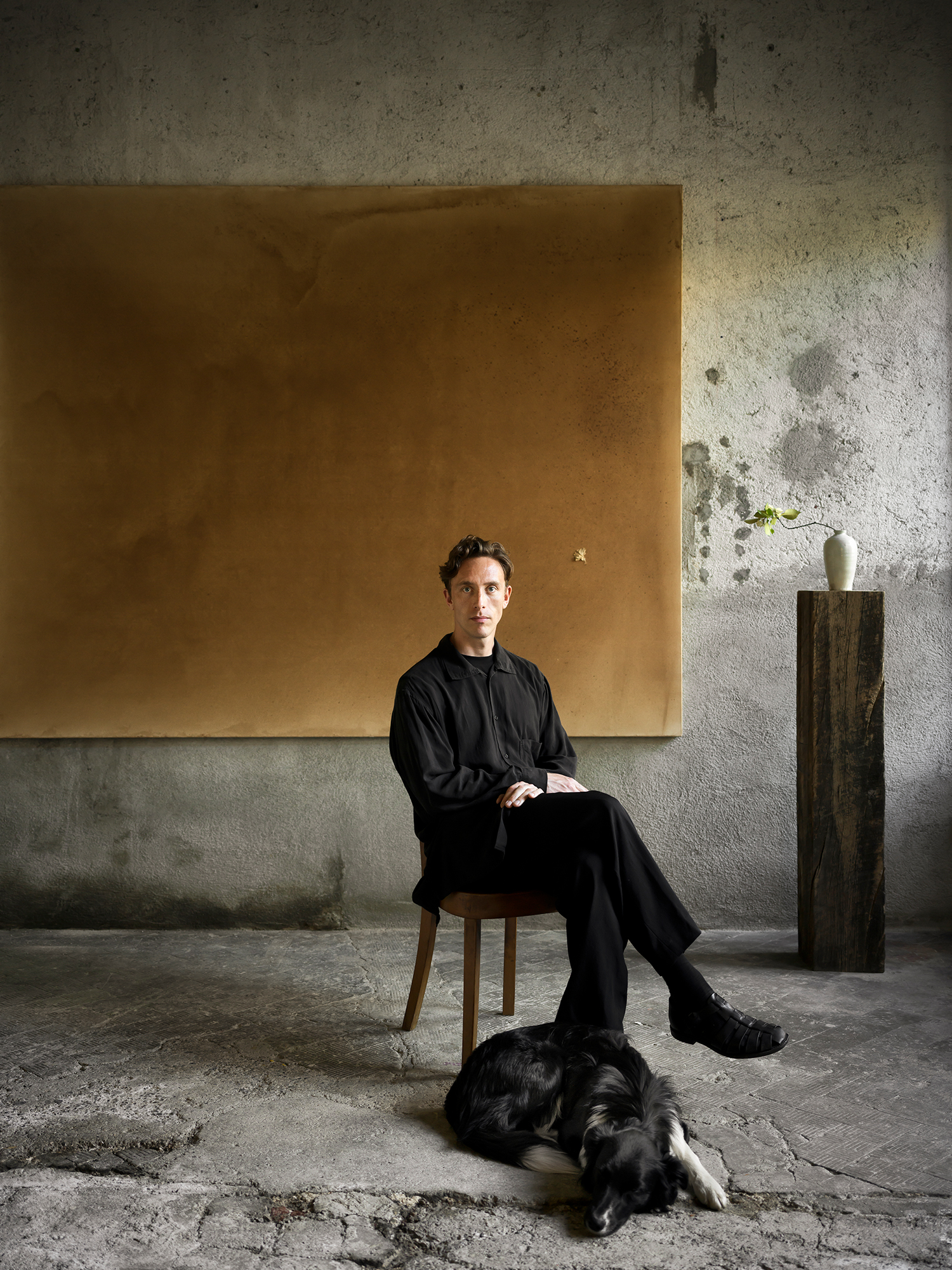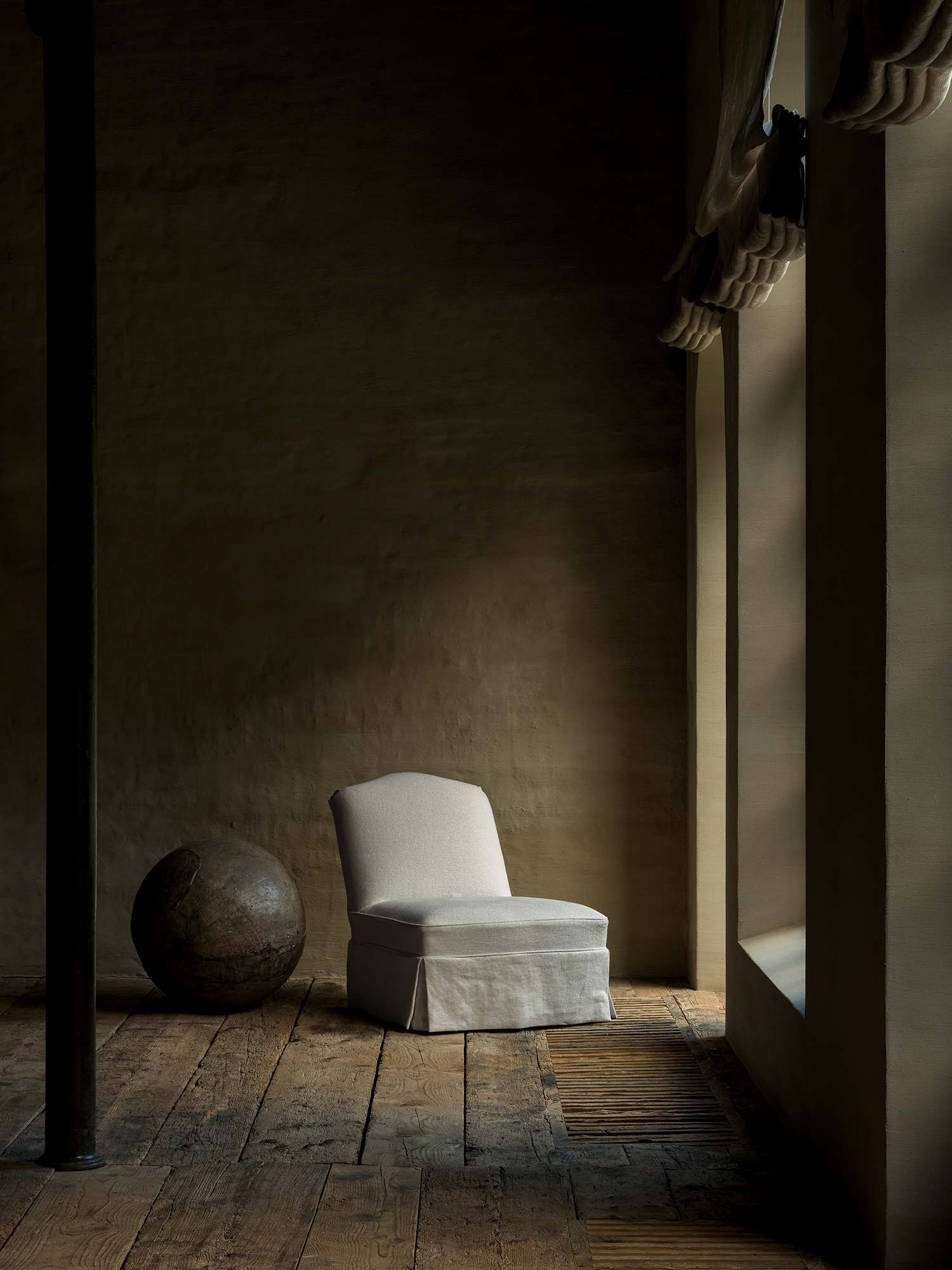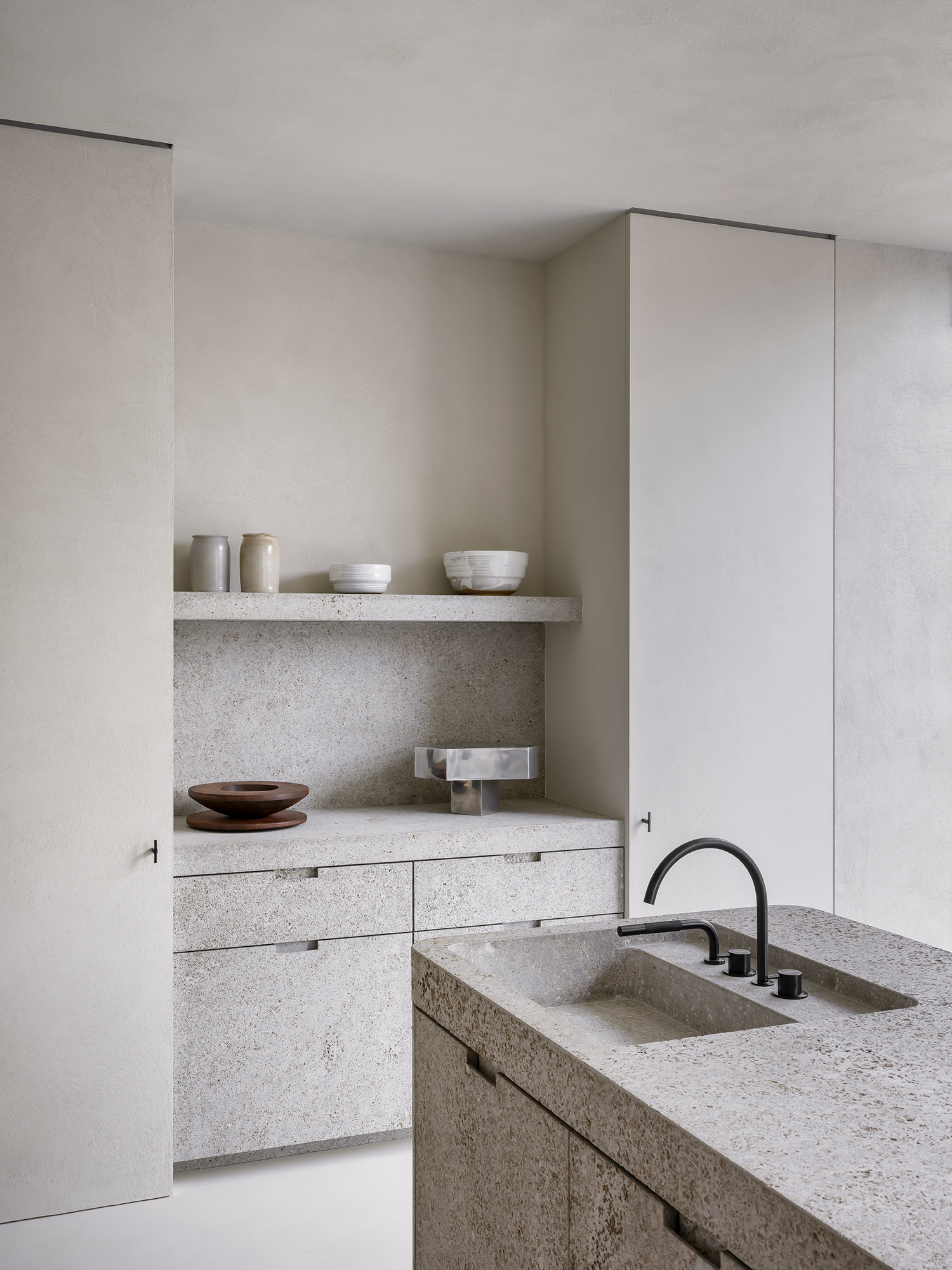
Visually Silent Architecture
Words by Harriet Thorpe
The radically simple spaces that Antwerp-based architect Nicolas Schuybroek designs smoothly wrap up complex contextual layers, tactile depth and personal narratives through architecture, interiors and objects.

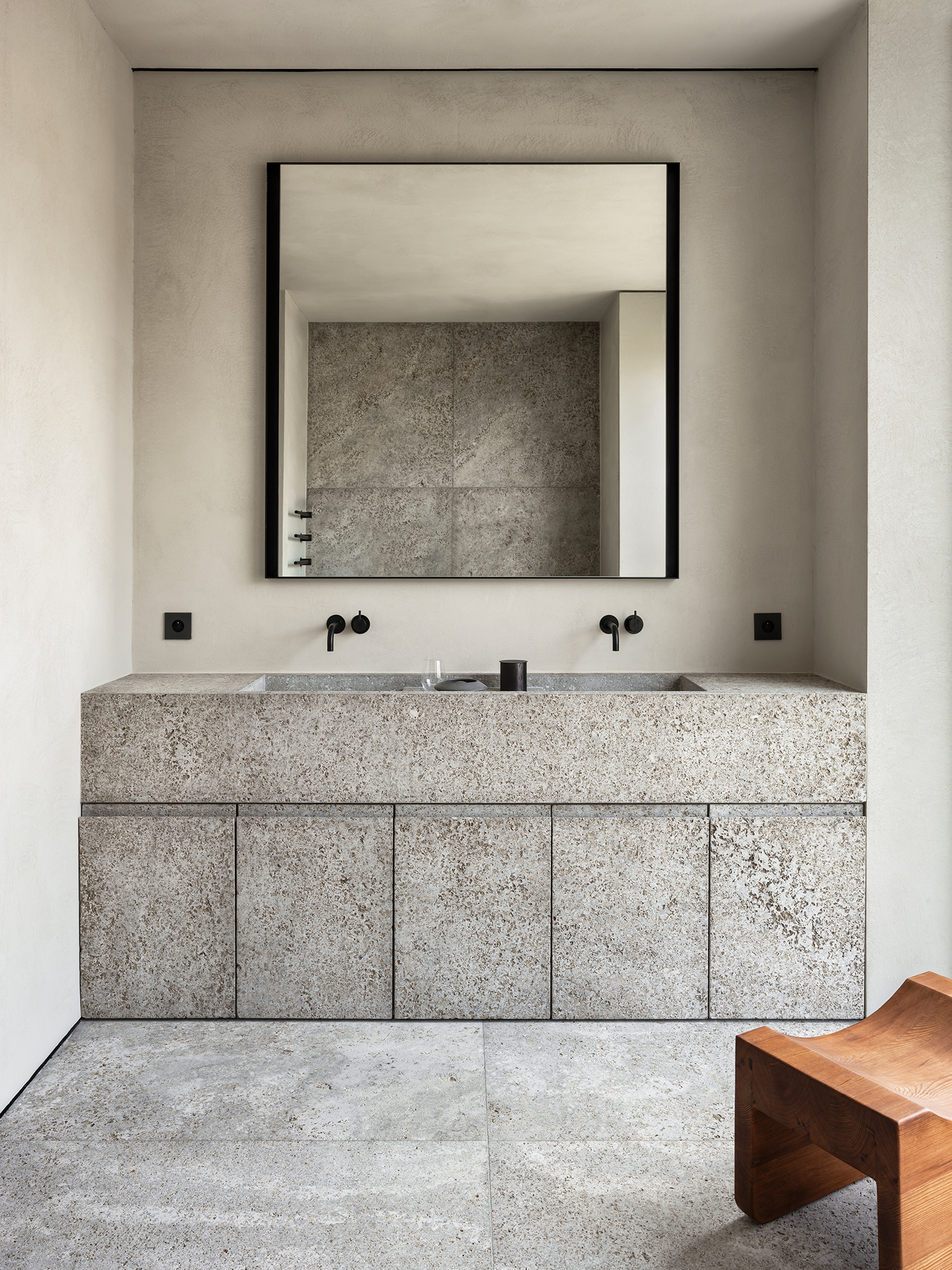
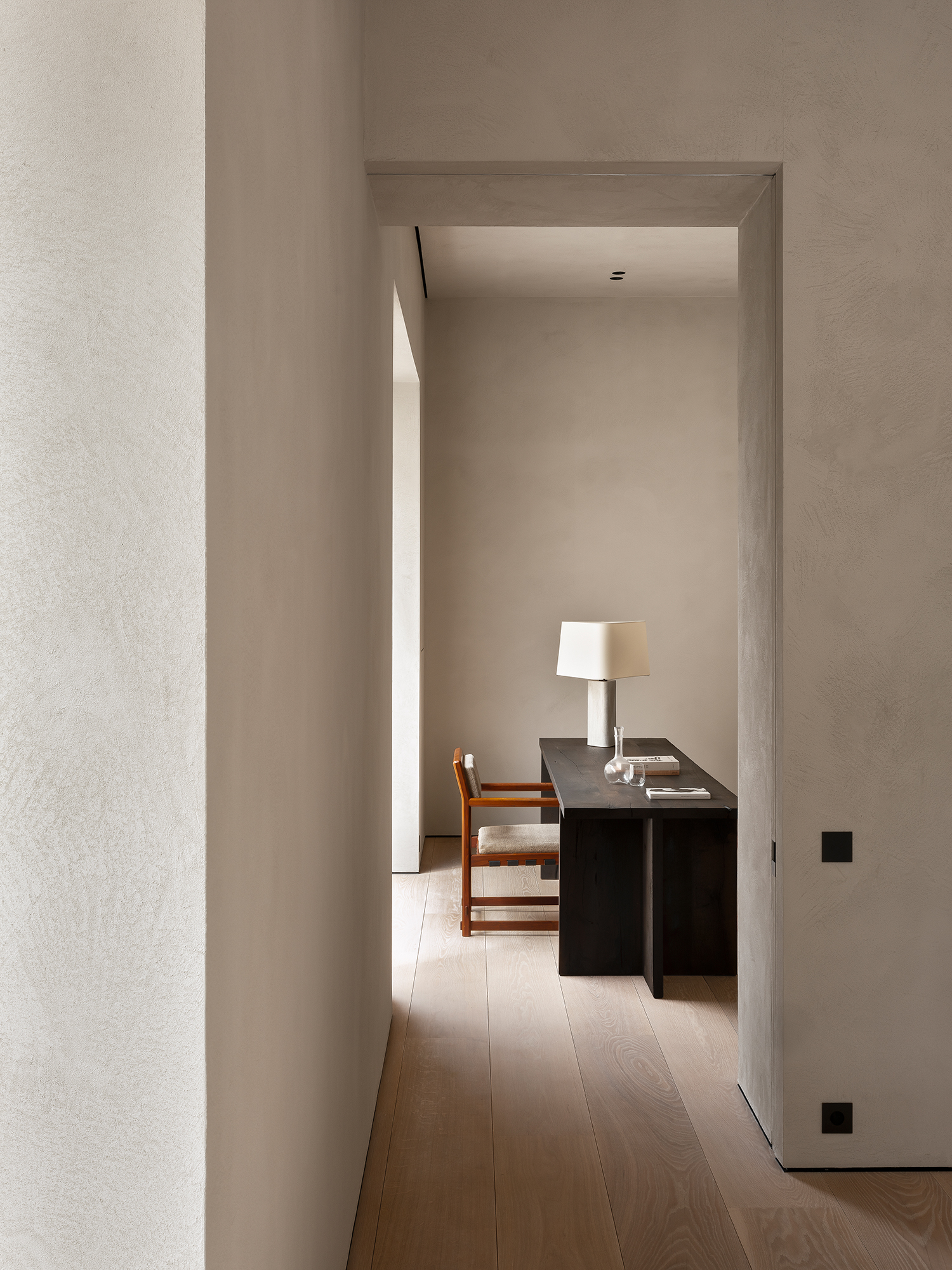
When architect Nicolas Schuybroek (b.1981, Brussels) was studying architecture, first in Brussels and then at McGill in Montreal, ‘starchitects’ were making headlines with spontaneous abstract shapes and brash colours. The ‘Guggenheim effect’ had taken its grip and buildings by the likes of Koolhaas, Nouvel and Gehry were landing like aliens on skylines. Instead of being seduced, Schuybroek started searching: “I began visiting monasteries of the 10th to 14th centuries, where thick stone walls and plaster brought a calming, soulful and emotional experience quite opposed to the buildings of the 90s,” he says.
Because whilst a Schuybroek-designed space is minimal, its expression surpasses surface level in a philosophical meditation on life itself; where the rich patina of exposed raw materials is a gesture to the earth; a handcrafted detail reveres the living history of artisanal craft; and a 20th century chair nods to the idealistic endeavour of the Modernist
movement. The aura of a painting unlocks our imaginative inner worlds, while the planting of a native species defers to the reality of what lies beyond us.
This holistic approach was influenced by Belgian architect Vincent Van Duysen, for whom Schuybroek began working at 25 years old. “Vincent pushed me to concretise the search for emotions through the link between landscape, architecture, interiors, art and furniture,” he recalls, “but also through the use of materials – natural, timeless materials that only get more beautiful with time. The experience completely reshaped my vision of architecture, the main influence being that context is paramount.”
Schuybroek is drawn to Modernist furniture by the likes of George Nakashima, Jean Royère, Gio Ponti, Jose Zanine Caldas, and art by Wyatt Kahn, Richard Nonas and Imi Knoebel – often using these pieces as devices to celebrate the spaces that are most meaningful and intimate to his clients. For the 19th century Antwerp home of Peter Philips, a fashion industry virtuoso, a round marble bathtub is paired with a small artwork by Günther Uecker from the 1970s. In the Paris apartment of Barbara Boccara, the cofounder of fashion brand Ba&Sh, he placed a custom-designed tree-trunk table in the hallway alongside a playful painting by Harold Ancart. In the open plan living space of a family home for Thomas Ostyn, third-generation owner of Obumex, tactile Pierre Jeanneret chairs and a Rick Owens console holding custom-designed vases bring structure and warmth to the space they use the most.


